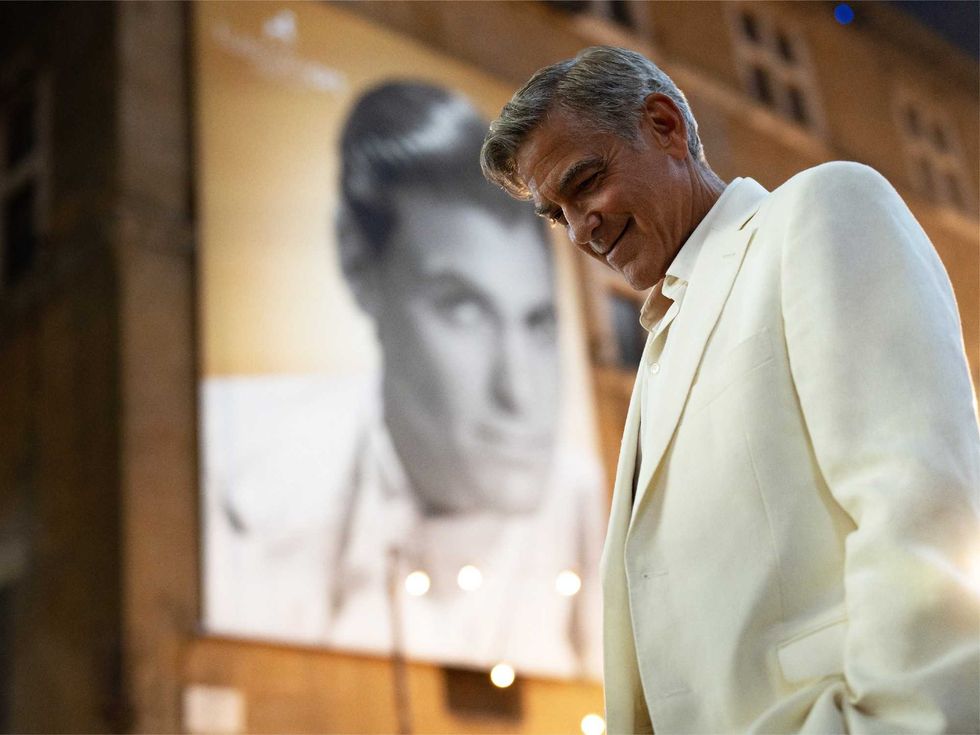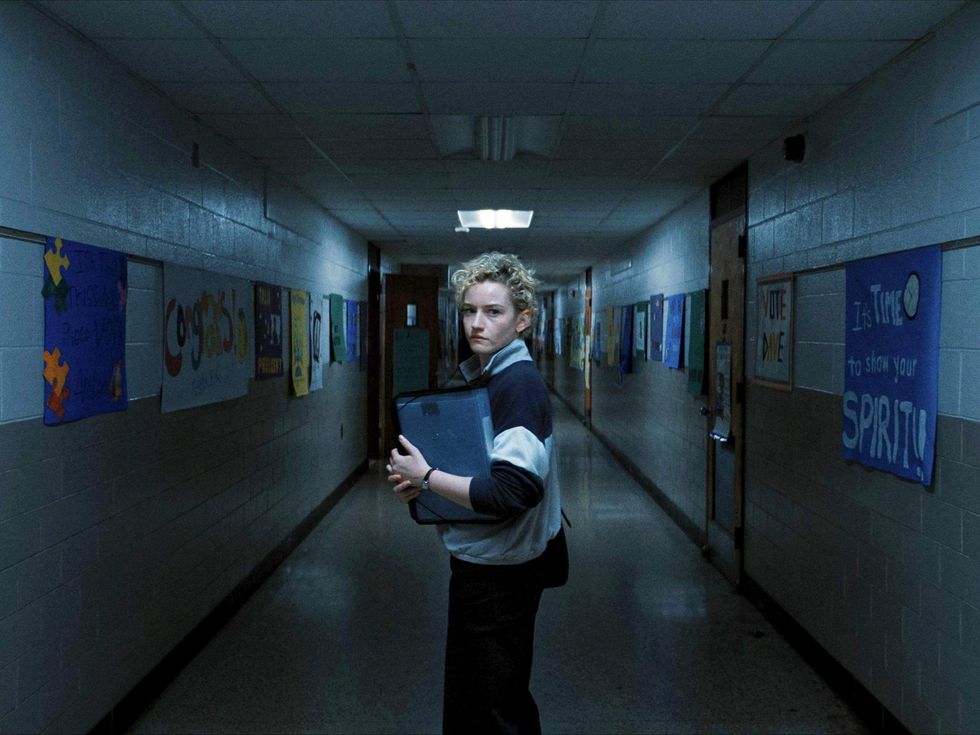inspirational story
The work of artist Henry Ossawa Tanner is seen in a new light at rare MFAHexhibit
 Henry Ossawa Tanner, The Annunciation, 1898, oil on canvas, Philadelphia Museumof Art, Philadelphia, Pa., purchased with the W.P. Wilstach Fund, 1899Photo courtesy of Museum of Fine Arts, Houston
Henry Ossawa Tanner, The Annunciation, 1898, oil on canvas, Philadelphia Museumof Art, Philadelphia, Pa., purchased with the W.P. Wilstach Fund, 1899Photo courtesy of Museum of Fine Arts, Houston Henry Ossawa Tanner, Fishermen at Sea, c. 1913, oil on canvas, SmithsonianAmerican Art Museum, Washington, D.C., gift of Jesse O. TannerPhoto courtesy of Museum of Fine Arts, Houston
Henry Ossawa Tanner, Fishermen at Sea, c. 1913, oil on canvas, SmithsonianAmerican Art Museum, Washington, D.C., gift of Jesse O. TannerPhoto courtesy of Museum of Fine Arts, Houston Henry Ossawa Tanner, The Resurrection of Lazarus, 1896, oil on canvas, Muséed’Orsay, Paris, FrancePhoto by Hervé Lewandoswki/© Réunion des Musées Nationaux/Art Resource, New York
Henry Ossawa Tanner, The Resurrection of Lazarus, 1896, oil on canvas, Muséed’Orsay, Paris, FrancePhoto by Hervé Lewandoswki/© Réunion des Musées Nationaux/Art Resource, New York Henry Ossawa Tanner, A View of Palestine, 1898-1899, oil on canvas, The FrancesLehman Loeb Art Center, Vassar College, Poughkeepsie, N.Y, gift of Mrs. WalterDriscoll (Margaret L. Weyerhaeuser, class of 1923), Mrs. F. Rodman Titcomb(Elizabeth L. Weyerhaeuser, class of 1915) and Mrs. Robert J. Sivertsen (SarahWeyerhaeuser, class of 1930)Photo courtesy of Museum of Fine Arts, Houston
Henry Ossawa Tanner, A View of Palestine, 1898-1899, oil on canvas, The FrancesLehman Loeb Art Center, Vassar College, Poughkeepsie, N.Y, gift of Mrs. WalterDriscoll (Margaret L. Weyerhaeuser, class of 1923), Mrs. F. Rodman Titcomb(Elizabeth L. Weyerhaeuser, class of 1915) and Mrs. Robert J. Sivertsen (SarahWeyerhaeuser, class of 1930)Photo courtesy of Museum of Fine Arts, Houston Henry Ossawa Tanner, A Mosque in Cairo, 1897, oil on canvas, William M. LewisJr. and Carol Sutton LewisPhoto by Joshua Nefsky
Henry Ossawa Tanner, A Mosque in Cairo, 1897, oil on canvas, William M. LewisJr. and Carol Sutton LewisPhoto by Joshua Nefsky Henry Ossawa Tanner, The Disciples See Christ Walking on the Water, c. 1907, oilon canvas, Des Moines Art Center, Des Moines, Iowa, Permanent Collections, giftof the Des Moines Association of Fine ArtsPhoto courtesy of Museum of Fine Arts, Houston
Henry Ossawa Tanner, The Disciples See Christ Walking on the Water, c. 1907, oilon canvas, Des Moines Art Center, Des Moines, Iowa, Permanent Collections, giftof the Des Moines Association of Fine ArtsPhoto courtesy of Museum of Fine Arts, Houston Henry Ossawa Tanner, Portrait of the Artist’s Mother, 1897, oil on canvas,Philadelphia Museum of Art, Pa., partial gift of Dr. Rae Alexander-Minter andpurchased with the W. P. Wilstach Fund, the George W. Elkins Fund, the Edwardand Althea Budd Fund and with funds contributed by The Dietrich Foundation, 1993Photo courtesy of Museum of Fine Arts, Houston
Henry Ossawa Tanner, Portrait of the Artist’s Mother, 1897, oil on canvas,Philadelphia Museum of Art, Pa., partial gift of Dr. Rae Alexander-Minter andpurchased with the W. P. Wilstach Fund, the George W. Elkins Fund, the Edwardand Althea Budd Fund and with funds contributed by The Dietrich Foundation, 1993Photo courtesy of Museum of Fine Arts, Houston
Josephine Baker, James Baldwin, Nina Simone — and don’t forget Henry Ossawa Tanner.
Dancer, writer, singer, and painter, all four were African-American artists who left their homes, that perhaps didn't always feel like home, to seek inspiration and refuge in France.
It’s hard not to see this in a new light, in the midst of an election cycle featuring bumper stickers and T-shirts with the slogan, “Time to Make the White House White Again.”
The exhibition features more than 100 of Tanner’s landscapes, portraits, and paintings of biblical themes.
Tanner may be the least familiar name on this list, but a major traveling retrospective, Henry Ossawa Tanner: Modern Spirit, is making its final stop at the Museum of Fine Arts Houston from now through Jan. 13, 2013. The exhibition, organized by the Pennsylvania Academy of the Fine Arts and curated by Anna O. Marley, features more than 100 of Tanner’s landscapes, portraits, and paintings of biblical themes.
Tanner is also, no doubt, less familiar than his artistic contemporaries John Singer Sargent, James McNeill Whistler, Tanner’s mentor Thomas Eakins, and others. And yet Tanner is often-described as the most famous African-American artist of his era.
Middle East and portraits
Like Sargent, Tanner shared an interest in the Middle East and traveled there to paint. Like Whistler, Tanner painted portraits, notably a marvelous rendering of his mother in a clear homage to Whistler’s famous "Arrangement in Grey and Black" No. 1 often called Whistler’s Mother.
The difficulty of locating Tanner with respect to a sense of racial and national belonging impacts his visibility.
Tanner is often quoted as having said of Paris, "I am simply M. Tanner, an American artist. Nobody knows or cares what was the complexion of my forebears."
Tanner is often quoted as having said of Paris, "I am simply M. Tanner, an American artist. Nobody knows or cares what was the complexion of my forebears. I live and work there in terms of absolute social equality."
No doubt this is why, as curator Emily Neff put it, "many look to Tanner now as having a prescient post-racial attitude." In an exhibition catalogue essay Olivier Meslay is more cavalier, insisting of Tanner, "Before being black, he was an artist."
Although African-American genre scenes were common in his era, Tanner painted few. "The Banjo Lesson" presents a marvelous frozen moment, a scene of instruction as a young boy stands and leans against the legs of his seated elder who looks on as he cautiously explores the strings. In "The Thankful Poor," a similar pair bow their heads to say grace over a modest meal.
Tanner claimed he was drawn to such scenes "because of a desire to represent the serious, and pathetic side of life" and because "he who has most sympathy with his subjects will obtain the best results" as opposed to the "many artists who have represented Negro life [who] have only seen the comic, the ludicrous side of it, and have lacked sympathy."
Tellingly, Tanner writes in the third person.
Marlay remarked that for Tanner, whose mother was a freed slave, "abolition was built into the fabric of his name. "Ossawa" is a shortened form of abolitionist John Brown's nickname "Osawatomie" Brown, commemorating the Battle of Osawatomie, Kansas, in 1856.
The most famous religious painter
Clearly, Tanner was making a point when, in his signature work, "The Resurrection of Lazarus," he placed an African-American figure prominently amidst the crowd of awed onlookers. The painting is a study of contrast between the viewers of the miracle and the serenity of Christ and the resurrected Lazarus, who wakes gently, as if from a nap. Light returns gradually to the sepia-toned world in which the resurrection has happened, like life returning to a corpse.
Marley rued that this collection "probably won't be together for another 20 years or so" while Tinterow described the exhibition as a chance to "reach out to the African-American community."
As MFAH director Gary Tinterow remarked at a press preview for the exhibition, Tanner was perhaps "the most famous religious painter" of his era. "Lazarus" finds good company in his marvelous "The Annunciation." Mary, clothed in simple but richly texture robes and resting on a humble bed in a spare cell, stares into a column of light.
The most potent of Tanner's religious scenes begin to turn away from figures and from the blinding light of the annunciation and toward textured landscapes and cool tones. In "Sodom and Gomorrah," three bundled figures crouch small in the foreground. A white pillar of salt, the remainder of Lot's wife who turned back as she fled, stands behind them. All you can see is a massive cloud of smoke and the textured plains that once surrounded a city.
Texture, abstraction, layered paint, and steely blues take over. In "The Disciples See Christ Walking on the Water," several figures in a boat gaze at a white halo in the distance, but the canvas is dominated by the diamond texture of the water.
Perhaps it was his devotion to biblical scenes that drew him to travel to the Middle East to paint scenes like those that attracted Sargent. In "Palace of Justice, Tangiers," the blue-washed, roughly textured building serves as backdrop for two dark figures, a man leading a woman riding a donkey, as if any location might be the Holy Land if you see it in the right light.
Henry Ossawa Tanner: Modern Spirit offers rare opportunities. Marley rued that this collection "probably won't be together for another 20 years or so" while Tinterow described the exhibition as a chance to "reach out to the African-American community." Tanner's was, he said, an "inspirational story." It's hard not to wonder just what Tanner might think of that.











